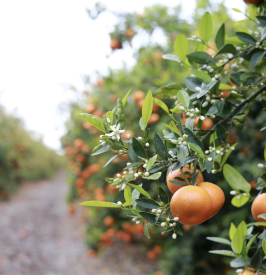Congress passed a massive 185-page tax-cut package in December 2017 to spur the economy. Included in it was a six-page provision encouraging investments in real estate projects and operating businesses located in low-income communities.
Here’s how it works. Governors from each state designate opportunity zones, or OZs, comprised of economically distressed census tracts. Individual investors then receive tax incentives – namely capital gains tax deferrals and reductions – to place money in qualified funds that finance property purchases and development in underserved communities.
It’s been a big success. Today, there are 8,764 opportunity zones across the country and hundreds of qualified funds helping people invest in revitalization projects that likely wouldn’t otherwise happen.
OZ funds raised more than $75 billion in private capital by the end of 2019, according to a report by the White House’s Council of Economic Advisers. That same report noted that jobs were created and property values in OZs increased because of the resulting investment, adding an estimated $11 billion in new wealth for residents.
Plans focused on affordable neighborhoods, apartment buildings, and mixed-use developments in large cities have grabbed the biggest OZ headlines. But there’s one fund laser focused on farmland and assisting economic development in rural American communities.
The Promised Land Opportunity Zone Fund was launched in 2020 and has secured more than $65 million in capital to purchase and upgrade farms. Today, Promised Land owns a dozen farms on more than 9,000 acres stretched across Illinois, Mississippi, and the Carolinas, and it’s invested in several projects like on-farm grain bins and irrigation systems to boost its farms’ productivity.
When Promised Land entered the marketplace, it sought an experienced institutional partner to help navigate the nuances of farmland ownership and provide economies of scale. It turned to Farmland Partners, which has helped the fund source deals, identify on-farm productivity improvements, and manage its assets.
The team made a splash in September 2022 when it completed a massive capex project on the OZ portfolio’s crown jewel property in Pamlico County, North Carolina.
The result was a state-of-the-art industrial grain bin system that is capable of housing more than 350,000 bushels of grain.
Owen Peele is the tenant on the more than 4,500-acre farm that houses the grain bin system, and he put the importance of the investment into perspective during the project’s unveiling.
“The property taxes on the new grain facility will add to the tax base of Pamlico County, but it’s going to do more than that. Just the jobs alone that have been created by the construction of this facility, and the guys that came and built this place have lived here; they have been here almost eight months,” Peele said. “What we will have following construction, when you start talking about a million bushels of corn, you’re talking 1,000 truck loads. So, truckers coming in, truckers going out, truckers stopping to buy fuel and food; so, it will add to the economy of Pamlico County.”
Peele believes the new setup will improve the agricultural economics of the county and said his neighbors are equally as excited as he is.
It’s a success story that John Heneghan hoped for when he first founded Promised Land.
I’m proud that the nation’s only farmland OZ fund has been delivering for its investors, its farmer tenants, and for the rural American communities we’re a part of.
John Heneghan
“I’m proud that the nation’s only farmland OZ fund has been delivering for its investors, its farmer tenants, and for the rural American communities we’re a part of,” Heneghan said. “And we’re just getting started. We have several projects underway at other properties, including farm building improvements and installing drainage tiles. We’re in the marketplace today with the goal of adding new farms to the Promised Land platform.”



